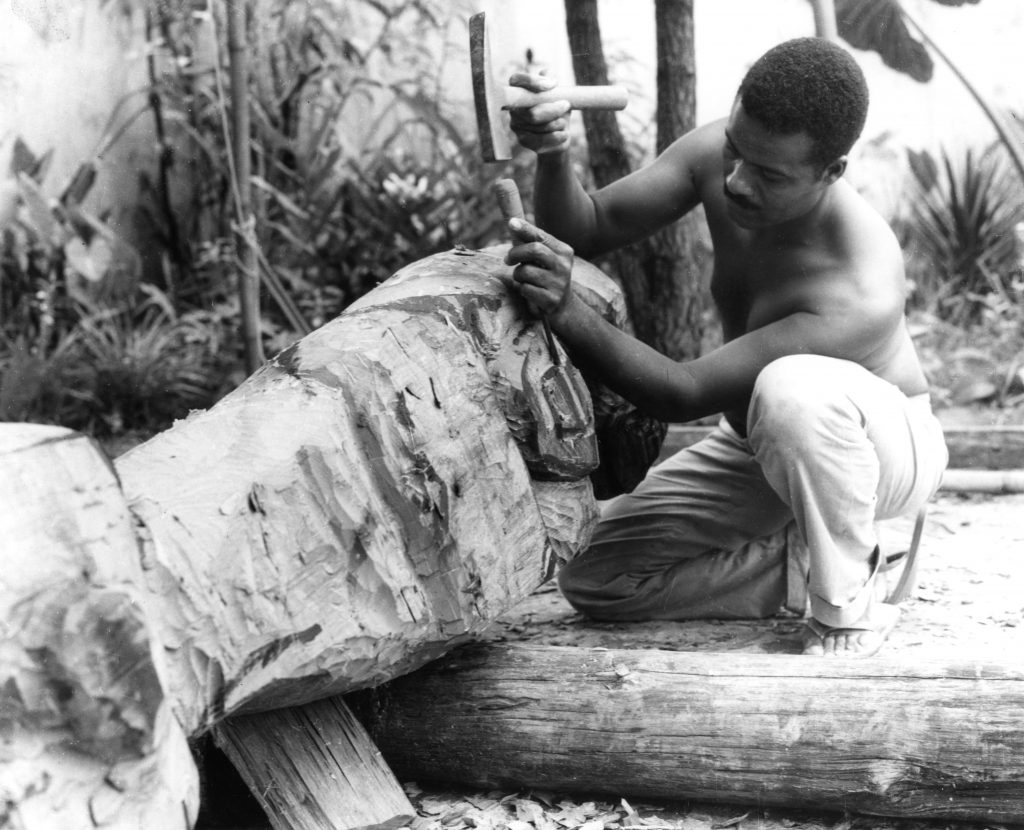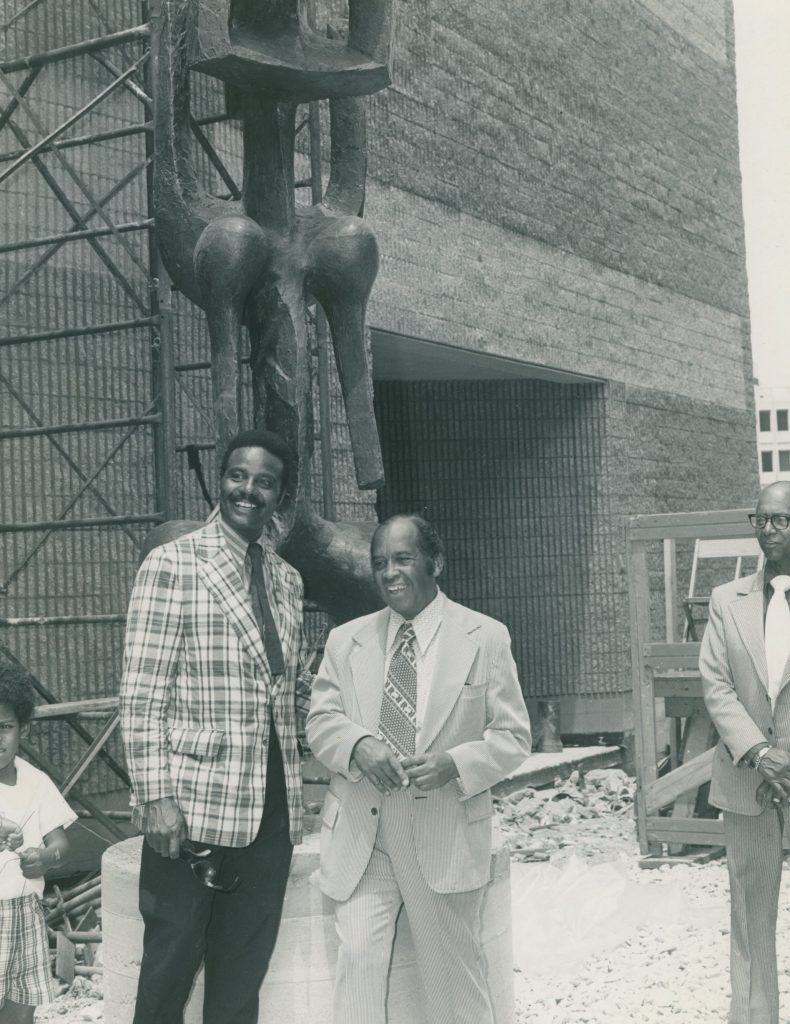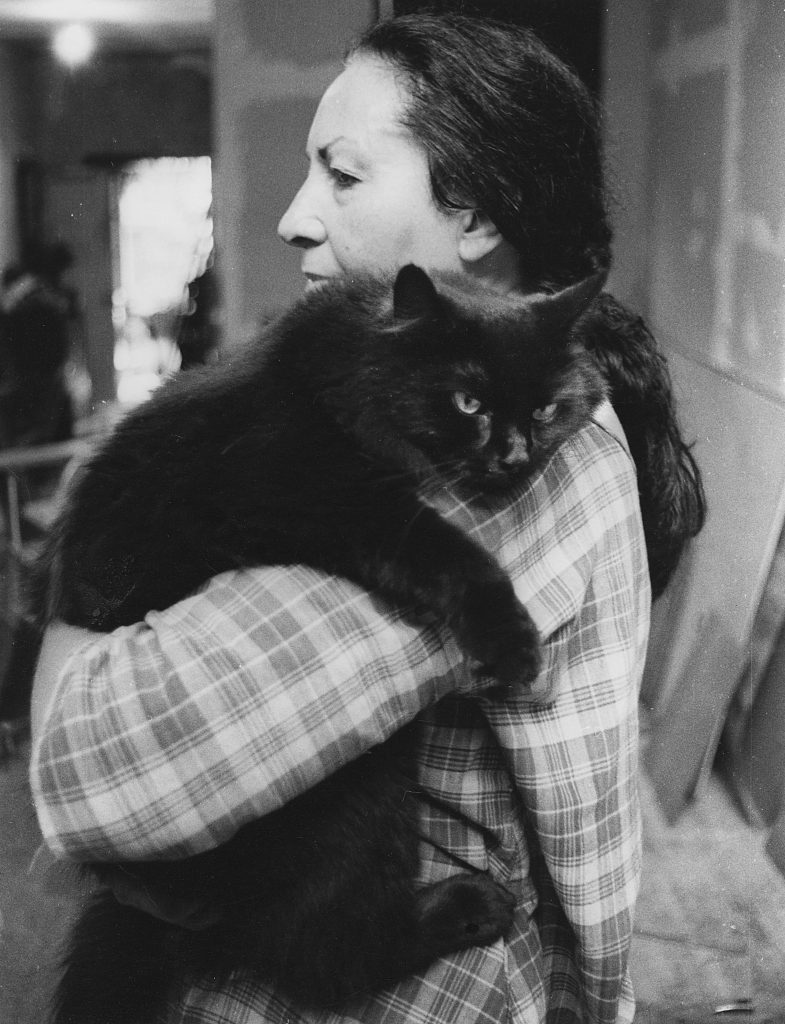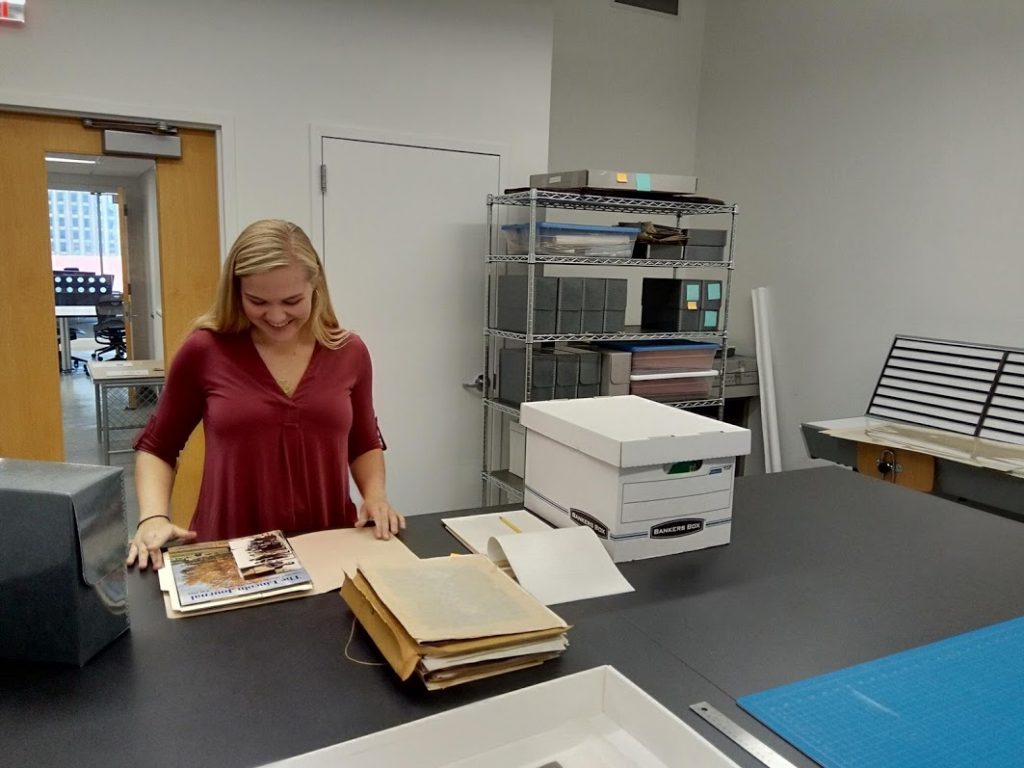
Contributed by Kelin Baldridge, Project Archivist for the John Rhoden papers
Work on the John Rhoden papers is well underway, so it seems appropriate to give the man himself a proper introduction.
John Walter Rhoden was born on March 13, 1916 in Birmingham, Alabama. He attended Industrial High School where he was mentored by sculptor William Grant. At age 16, John completed a portrait bust of the school’s principal, Arthur Parker, who the school is currently named after.

After high school, John attended Talladega College from 1934 to 1936. There he met Hale Woodruff, who was already an established muralist and painter at that time. Woodruff encouraged Rhoden to visit New York where he met fellow sculptors Augusta Savage and Richmond Barthé. By 1942, Rhoden was a private enlisted in the Reserve Corps of the U.S. Army. During this time, Rhoden completed portrait busts of several high ranking members of the military, including Major General H.R. Harmon. After his service, Rhoden attended the New School for Social Research and then Columbia University from 1947 to 1950 where he won the 1st Prize for Sculpture three times. Also, at Columbia, John met classmate and painter, Richenda Phillips (also spelled Richanda in the archives).

Richenda was a Washington native of Cherokee and Menominee descent. She first married her University of Washington in Seattle classmate, Lawrence L. Kay, who was killed in World War II. After the war, Richenda moved to New York City where she modeled and attended Columbia University in pursuit of a master’s degree in Asian art. After meeting, she and John moved in together in Greenwich Village, at which time Richenda taught painting at Stuyvesant High School’s evening program. In 1954, John and Richenda were married in Rome.
After his time at Columbia, Rhoden spent a year at the Skowhegan School of Painting and Sculpture in Maine before attending the American Academy in Rome from 1951 to 1954 on both a Fulbright Fellowship and the Prix de Rome.

John was then selected by the United States Department of State to serve as an artist ambassador from 1955 through 1959 as a part of the International Cultural Exchange and Fair Participation Act of 1956 (ambassadors were sent as early as 1954), best known for its jazz ambassadors. During this service, he visited over 20 countries in an official capacity. After his time traveling with the State Department, John and Richenda returned to New York City and purchased their forever-home at 23 Cranberry Street in Brooklyn in 1960. Shortly thereafter, John left for Indonesia on a Rockefeller Foundation Grant to set up a bronze foundry at a university in Bandung.

With their professional traveling largely behind them, John and Richenda settled into New York City life where they both taught and exhibited extensively. During his later career, John notably exhibited at the Whitney Museum of American Art, the Los Angeles County Museum of Art, and the African American Museum in Philadelphia. He also completed several major commissions including Monumental Bronze for the Harlem Hospital in New York, Monumental Abstraction for the Metropolitan Hospital in New York, Nesaika for the African American Museum in Philadelphia, Mitochondria for the Bellevue Hospital Center in New York, and Frederick Douglass for Lincoln University.
Though there is so much more to his story, we will end the introduction here. From breaching the Iron Curtain to living the high life with the likes of Richmond Barthé, Cab Calloway and Bill Robinson, John’s life was rich and exciting and we hope you will follow along with us as we discover what his archive has to tell!

This project, Rediscovering John W. Rhoden: Processing, Cataloging, Rehousing, and Digitizing the John W. Rhoden papers, is funded in part by the National Endowment for the Humanities, a federal agency.
ABOUT THE NATIONAL ENDOWMENT FOR THE HUMANITIES
Created in 1965 as an independent federal agency, the National Endowment for the Humanities supports research and learning in history, literature, philosophy, and other areas of the humanities by funding selected, peer-reviewed proposals from around the nation. Additional information about the National Endowment for the Humanities and its grant programs is available at: www.neh.gov.




